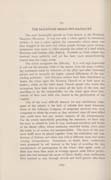
[p. 192]
XI
THE MOUNTAIN MEADOWS MASSACRE
The most lamentable episode in Utah history is the Mountain Meadows Massacre. It was not only a crime against its immediate victims; it was a crime against the community whose name was thus dragged in the mire and whose people through gross misrepresentation were made to suffer unjustly the odium of a deed which Mormons and Gentiles alike deplore. Probably no Utah subject has received more publicity and yet has been more unsatisfactorily treated than this tragic event.
The writer recognizes the difficulty. It is well nigh impossible to sift out the absolute truth of the matter from the many conflicting statements made by witnesses of the affair and other interested parties and to reconcile the highly colored differences of the contending partisans. Anti-Mormon writers have been determined to fasten the crime upon the Mormon Church or at least upon its leaders; while, on the other hand, Church people who resent this accusation, have been slow to admit all the facts of the case, and unwilling to fix the responsibility for the crime upon those individuals of their own faith who shared in the participation of the tragedy.
One of the most difficult features for any satisfactory treatment of the subject is the lack of reliable first hand witnesses. None of the Arkansas Company of emigrants survived who were competent to relate the events as they occurred since all were killed who could have had any certain memory of the circumstances. For the events immediately preceding the massacre, we have only the story as related by John D. Lee, confessed murderer and leader of the bloody affair, whose testimony, recorded twenty years after the event, is, of course, not unimpeachable. The story of the massacre itself must be pieced together from the admissions and confessions of Indians and white men told at different times and under varying circumstances. Sometimes, no doubt, these confessions were prompted by self interest in the hope of avoiding the just consequences of participation in the crime; then again, some of them may have been made in revenge against some fellow participant who had betrayed the secret of blood; finally, some confessions have reached us only through second and third parties who have

[p. 193]
probably colored or distorted them to meet their own particular bias. All of these testimonies are the more impeachable because they were not brought to light officially until the first and second trials of John D. Lee, nearly twenty years after the tragedy.
The subject is important, however, (1) as a phase of the Indian problem; (2) as a resultant incident of the Utah War; and (3) as the focus of important federal relations which arose out of the unfortunate affair. Before proceeding with a discussion of these phases, let us first turn to a brief preliminary review of the facts in the case.
In the spring of 1857, a company of about one hundred and forty Arkansas emigrants known as the Fancher party, among whom were a few Missourians, set out for southern California. They were reported to be an exceptionally well-to-do company, with many cattle, horses and mules for teams.1 T. B. H. Stenhouse, perhaps our best non-Mormon authority for this subject, obtained his information from his friend Eli B. Kelsey,2 who travelled with the emigrants from Fort Bridger to Salt Lake City. He describes the company as being "a highly respectable group of persons, sober and orderly" that in their associations, "seemed like a large gathering of kindred, or very near friends."3 He declares that they were wealthy; that in addition to the ordinary wagons they had several carriages; and that they were close observers of religious services night and morning as well as on the Sabbath. Upon the authority of his friend Kelsey, Stenhouse states that a distinct company of Missourians, known as "Wild Cats" travelled with the Arkansas contingent.4 They were described as a rough and ready set of men, regular frontier pioneers and though wholly unlike the Arkansas emigrants in character and disposition, yet deserving much respect. Bancroft dismisses the theory of there being two distinct companies
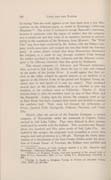
[p. 194]
by saying "that the truth appears to be, that there were a few Missourians in the Arkansas party, as stated in Hutchings' California Magazine."5 The writer is inclined to accept Bancroft's statement, because it conforms with the report of settlers that the company was a mixed one and that some of its members boasted of participating in the expulsion of the Mormons from Missouri. The "Wild Cats" may have been confused by Mr. Kelsey with the Dukes Company which came later and escaped the fate that befell the Fancher party. It seems almost certain that these Missourians dominated the company as it made its way through southern Utah, because the settlers ascribed to both the Arkansas and the Missouri contingents a far different character than that given by Stenhouse.
This mixed company of Arkansas and Missouri emigrants, then, arrived in Salt Lake City about the last of July and camped on the banks of the Jordan River. It would appear that their arrival in the valley created no special interest as no mention of it appears in the Deseret News of the period and Brigham Young declared that he had heard of it only by rumor.6 They remained several days on the Jordan, undecided as to whether to take the northern or the southern route to California. Charles C. Rich advised them to take the northern route by way of Bear River and the Humboldt. Acting upon his advice, the company went as far as Bear River, but there changed their minds and decided to pursue the southern trail. Their route led through the settlements of Provo, Spanish Fork, Springville, Fillmore, Paroman, and Cedar City.
Shortly after the arrival of the Fancher Company, a second company of Missourians under the command of Captain Dukes arrived in Salt Lake Valley. They were delayed in their journey southward by trouble with the Indians. This occurred near Beaver, about two hundred and fifty miles south of Salt Lake City. Attacked by the savages, the emigrants were compelled to corral their wagons and seek protection in a rifle pit. Through the timely intervention of a detachment of the Iron County Militia under the direction of Colonel Dame7 of Parowan, the Indians were pacified and
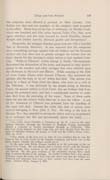
[p. 195]
the emigrants were allowed to proceed on their journey. One Indian was shot and two members of the company were wounded in the affair. When beyond the line of settlement, on Muddy Creek, about one hundred and fifty miles beyond Cedar City, they were again attacked, and this time rescued by Jacob Hamblin, Samuel Knight and Dudley Leavitt, Mormon guides and interpreters.8
Meanwhile, the unhappy Fancher party had met with a horrible fate at Mountain Meadows. It was reported that the emigrants were committing outrages against both the Indians and the Mormon settlers and that these had so greatly enraged the former that the latter feared for the company's safety before it had reached Cedar City. "While at Fillmore," writes George A. Smith, "the emigrants threatened the destruction of the town, and boasted of their participation in the murders and other outrages that were inflicted upon the Mormons in Missouri and Illinois. While camping at the Sink of Corn Creek, fifteen miles beyond Fillmore, they poisoned the springs, and the body of an ox9 which had died. The carcass was eaten by a hand of Pieds from the desert, who were on a visit to the Pahvants. I was informed by the people living at Meadow Creek, the nearest settlers to Corn Creek, that ten Indians died from eating the poisoned meat, and that a considerable number of cattle also died from the poisoning of the water. Some of these cattle were fat and the owners 'tried them up' to save the tallow. A son of Mr. Robinson of Fillmore was poisoned from the handling of the meat and died. Among the cattle that died of poison were several belonging to Hon. John A. Ray. He being at the time in Europe, Mrs. Ray attended to saving the tallow and was so poisoned as to endanger her life and permanently injure her hand. . . . .
Silas Smith, in the first trial of John D. Lee, testified that he saw the dead ox left at Corn Creek by the Fancher Company and heard one of the party inquire whether the Indians would eat it.
At the same trial, Elisha Hoopes testified as to the poisoning of the ox left at Corn Creek. He said that he saw a German doctor with the Fancher Company make three incisions in the animal and pour the contents of a vial therein. He also gave evidence of the emigrants having three small bags of poison thrown in the springs. He further testified that a boy named Robinson drank the water and died from the effects and that the Indians afterwards told witnesses that some of their number had died from the same cause. Deseret News, August 4, 1875.
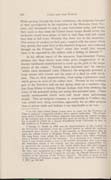
[p. 196]
While passing through the lower settlements, the emigrants boasted of their participation in the expulsion of the Mormons from Missouri, and threatened to stop at some convenient point, and fatten their stock so that when the United States troops should arrive, the emigrants would have plenty of beef to feed them with and would then help to kill every Mormon that there was in the mountains. This course of conduct on their part, coupled with the rumor which they spread, that some four or five hundred dragoons were expected through on the Fremont Trail,10 whom they would join, caused them to be regarded by the settlers with a feeling of distrust."11
In his official report of the massacre, Superintendent Forney declares that these stories were either gross exaggerations or deliberate falsehoods manufactured to cover up the guilt of the perpetrators of the crime. "Persons have informed me," he reports, "whilst there encamped (near Fillmore) the emigrants poisoned a large stream with arsenic and the meat of a dead ox with strichnine. This ox died, unquestionably, from eating a poisonous weed, which grows in most of the valleys here. Persons in the southern part of the Territory told me last spring when on a southern trip, that from fifteen to twenty Pahvant Indians died from drinking the water of the poisoned spring and eating this poisoned meat. Other equally unreasonable stories were told about these unfortunate people. That an emigrant company as respectable as I believe this was, would carry along strichnine, apparently for no other purpose than to poison cattle and Indians is too improbable to be true. . . . .
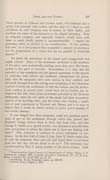
[p. 197]
Those persons in Fillmore and further south, who believed that a spring was poisoned with arsenic and the meat of a dead ox with strichnine, by said company, may be honest in their belief, and attribute the cause of the massacre to the alleged poisoning. Why an emigrant company, and especially farmers, would carry with them so much deadly poison is incomprehensible. I regard the poisoning affair as entitled to no consideration. In my opinion, bad men, for a had purpose have magnified a natural circumstance for the perpetration of a crime that has no parallel in American history."12
No doubt the grievances of the Saints were exaggerated and highly colored. Many of the statements attributed to the members of the party were undoubtedly nothing more than mere idle boasts, spoken in the spirit of bravado. Nevertheless, it is clear that the majority of the complaints and the general agreement of the reports of witnesses, both official and unofficial, substantiates the probability that the emigrants were most unwise in their conduct, and did much through their idle ranting and tantalizing, if not obnoxious conduct to incite the resentment of both the Indians and the settlers. Such conduct in normal times would have led to trouble, but indulged at this time when great excitement prevailed in the Mormon settlements, when the war spirit of the people had been aroused by reports of an invading army, and the Saints were fearing a repetition of past experiences in Missouri and Illinois, and it is easy to believe that it would be almost certain to invite active hostility if not certain calamity.
It was alleged that these emigrants could not purchase provisions in any of the settlements through which they passed, that Brigham Young ordered them to leave Salt Lake City, and that George A. Smith, as a special courier, was directed to precede them with instructions to advise the Saints not to have any dealing with them.13 This, however, is contrary to sworn statements of witnesses. In the first trial of John D. Lee, Jesse N. Smith stated that he sold the emigrants flour and salt and urged them to purchase more but that they did not desire to do sold.14 This testimony was corroborated by Silas S. Smith, brother of the above witness. Both
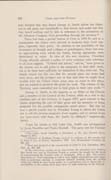
[p. 198]
men testified that they heard George A. Smith advise the Saints not to sell grain and breadstuffs to feed horses and mules but that they heard nothing said by him in reference to the prevention of the Arkansas Company from proceeding through the territory.15
There had been a partial famine in Utah in 1855-56, and as a consequence the Saints were advised to husband their food sup-plies, especially their grain. In addition to the possibility of the recurrence of drought and a plague of grasshoppers, there was now an approaching army which the Saints, fearing oppression, were determined to resist. In view of this new situation, President Young officially advised a policy of strict economy with reference to all food supplies. "Council and advice," said he, "were given to the citizens not to sell grain to the emigrants to feed their stock, but to let them have sufficient for themselves if they were out. The simple reason for this was that for several years our crops had been short, and the prospect was at that time that we might have trouble with the United States army then en route to this place, and we wanted to preserve the grain for food. The citizens of the Territory were counselled not to feed grain to their own stock."16
George A. Smith, in his capacity as an Elder of the Church and a member of the Council of the Twelve, while on a visit to the southern part of the territory in August 1857, gave counsel to the Saints respecting the care of their grain and the necessity of being prepared for the possible emergencies noted above. But that he was a special courier sent by President Young to advise the Saints not to sell the passing emigrants food supplies and to refrain from any intercourse with them, Mr. Smith, by affidavit,17 emphatically denies.
Upon his return to Salt Lake City, Smith was accompanied by Jacob Hamblin and Tales Haskell. The party met the Fancher
Read and accepted at the second trial of John D. Lee, September, 1876. Ibid., pp. 307, 308.
In his confession, written seven days before his execution, Lee declares that Smith was sent by President Young to prepare the people for the work of exterminating the Fancher train of emigrants. Ibid., p. 225. His confession, however, from beginning to end is most highly contradictory and represents a passionate attempt to exonerate himself partially from the terrible crime for which he was found guilty as a participant and to throw the responsibility of the odious deed upon those in high authority in the Church.
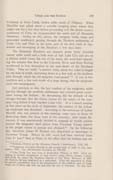
[p. 199]
Company at Corn Creek, twelve miles south of Fillmore. When Hamblin was asked about a suitable camping place where they might rest for a few days before proceeding over the desert country southwest of Utah, he recommended the south end of Mountain Meadows. Acting on this advice, the company broke camp and proceeded southward, passing through the Mormon settlements of Cedar City and Pinto in the latter part of the first week in September and encamping at the Meadows a few days later.
The Mountain Meadows are situated about three hundred twenty miles south and a little west of Salt Lake City and are on a plateau which forms the rim of the basin, the watershed separating the streams that flow to the Colorado River and those flowing northward to lose themselves in the semi-desert of the Escalante Valley. They are really "a narrow valley about five miles in length by one mile in width, narrowing down to a few rods at the southern end, through which the old emigrant road passed."18 It was at this southern end, a few rods north of a large spring, that the emigrants went into encampment.
Just previous to this, the bad conduct of the emigrants while passing through the southern settlements had aroused great excitement among the Indians. So threatening did the attitude of the savages become, that the Saints feared for the safety of the company long before it had reached Cedar City. At a Council meeting at that place on the sixth of September, the conduct of the Arkansas emigrants was discussed. According to the testimony of Laban Morrill, who was present at this meeting, some were in favor of destroying them, but these were in the minority; after much discussion, it was unanimously decided to suspend all hostile actions toward the emigrants until advice from President Young relative to the proper course to pursue was obtained.19 On the following day, therefore, James H. Haslam was dispatched as messenger to Governor Young. Before he left, word had been received from John D. Lee,20 then at Pinto, to the effect that the Indians had the
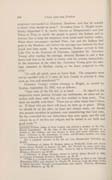
[p. 200]
emigrants surrounded at Mountain Meadows, and that he wanted to know what should be done.21 President Isaac C. Haight immediately dispatched P. K. Smith (known as Klingensmith) and Joel White to Pinto to notify the people to pacify the Indians and to instruct Lee to keep the emigrants from harm until further orders. When these messengers reached Pinto, Lee and the Indians had gone to the Meadows and before the message was received the first attack had been made. In the meantime, Haslam arrived in Salt Lake City in the forenoon of Thursday, September 10. Governor Young, after reading the message, directed Haslam to rest a few hours and then to be ready to return with his written instructions. In the afternoon of the same day, Governor Young gave his message, unsealed, to Haslam, saying as the latter prepared to ride away:
"Go with all speed, spare no horse flesh. The emigrants must not be meddled with if it takes all Iron County to prevent it; they must go free and unmolested."22
Governor Young's written message to Haight, as carried by Haslam, September 10, 1857, was as follows :
"Your note of the 7th inst. is at hand. . . . . In regard to the emigration trains passing through our settlements, we must not interfere with them until they are first notified to keep away. You must not meddle with them. There are no other trains that I know of. If those who are there will leave, let them go in peace. While we should be on the alert, on hand and always ready, we should also possess ourselves in patience, ever remembering that God rules. He has overruled for our deliverance thus once again, and He will always do so if we live our religion and be united in our faith and good work."23
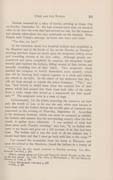
[p. 201]
Haslam returned by a relay of horses, arriving at Cedar City on Sunday, September 13. He had covered more than six hundred miles in six days but even then had arrived too late, for the massacre had already taken place two days previously on the eleventh. When Haight read Young's message, he burst into tears and cried :
"Too late, too late!"
In the meantime about two hundred Indians had assembled at the Meadows and at the break of day on the Monday or Tuesday24 morning previous began an attack upon the emigrants, killing seven and wounding sixteen at the first volley. Although greatly outnumbered and taken completely by surprise, the emigrants fought bravely and repulsed the Indians, killing several of their braves and mortally wounding two of their chiefs. This temporary check enabled the company to fortify themselves more securely, which they did by drawing their wagons together in a circle and sinking the wheels to the hubs. In the center of this enclosure they dug a rifle pit large enough to contain the entire Company. "This," says Lee, "had served to shield them from the constant fire of their enemy which had poured into them from both sides of the valley from a rocky range that served as a breastwork for their assailants."25 The emigrants were in a state of siege.
Unfortunately, for the events preceding the massacre we have only the words of Lee, as he was the only white man known to have been with the Indians before the terrible plan of massacre was concocted on the evening of Thursday, September 10. According to his testimony however, which can never be accepted as reliable, the Indians sent runners into the surrounding country after the first attack, to gather more tribesmen. "I was notified of what had taken place early Tuesday morning," says Lee, "by an Indian who came to my house and gave me a full account of all that had been done. The Indian said it was the wish of all the Indians that I should lead them and that I must go back with him to the camp."26
Lee crossed the mountains from his home at Harmony and upon his arrival at the Meadows, found the Indians in a frenzy of
24 Lee says the first attack occurred on Tuesday morning. Lee, Mormonism Unveiled, p. 266.
Others, among whom are Linn and Bancroft, accept Monday as the date of the first attack. See Linn, The Story of Mormonism, p. 521 and Bancroft, History of Utah, p. 550.
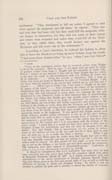
[p. 202]
excitement. "They threatened to kill me unless I agreed to lead them against the emigrants and kill them," he reports. "They also said that they had been told that they could kill the emigrants without danger to themselves, but they had lost some of their braves and others were wounded and unless they could kill all the 'Mericats,' as they called them, they would declare war against the Mormons and kill every one in the settlements."27
According to Lee's statement, he induced the Indians to allow him to leave the Meadows to bring up more Indians from the South. "I had gone about sixteen miles," he says, "when I met Carl Shirts28
28 Lee, in his confession, insists that he received orders from Haight to direct the massacre. Thus he says: "I and those with me acted by virtue of positive orders from Isaac C. Haight and his associates at Cedar City. Before I started on my mission, I was told by Isaac Haight that his orders to me were the result of full consultation with Col. William H. Dame and all in authority. . . . . About the seventh of September, 1857, I went to. . . . . Cedar City from my home at Harmony by order of President Haight. I did not know what he wanted of me but he had ordered me to visit him and I. . . . . obeyed. . . . . When I got to Cedar City, I met Isaac C. Haight on the public square of the town." . . . . After reviewing the abuses of the emigrants, emphasizing that they had violated Mormon women, resisted the officers of Cedar City, who had attempted to arrest them for violating the law, and threatened to join Johnston's Army in their supposed plan of exterminating the Saints, Lee claims that Haight gave him specific orders relative to the massacre. "My orders were to go home to Harmony" he continues, "and see Carl Shirts, my son-in-law, and Indian interpreter, and send him to the Indians in the South, to notify them that the Mormons and Indians were at war with the 'Mericats' and bring all the Southern Indians up and have them join those from the North, so that their force would be sufficient to make a successful attack on the emigrants. It was agreed that Haight should send Nephi Johnson, another Indian interpreter, to stir up all the other Indians that he could find, in order to have a large enough force of Indians to give the emigrants a good hush. He said, 'these are the orders that have been agreed upon by the Council and it is in accordance with the feelings of the entire people.' I asked him if it would not have been better to first send to Brigham Young for instructions, and find out what he thought about the matter. 'No,' said Haight, 'that is unnecessary, we are acting by orders. Some of the Indians are now on the war path and all of them must be sent out; all must go, so as to make the thing a success.' . . . . When I got home, I told Carl Shirts what the orders were that Haight had sent to him. Carl was naturally cowardly and was not willing to go, but I told him the orders must be obeyed. He then started off that night, or early next morning, to stir up the Indians of the South, and lead them against the emigrants. The emigrants were then camped at Mountain Meadows." Confession of John D. Lee, in Lee, Mormonism Unveiled, pp. 214-226.
It should be remembered that Lee's confession was made after he had been convicted and only seven days before his execution which took place at Mountain Meadows, March 23, 1877. It is highly inconsistent with and contradictory to the sworn testimonies of Haslam, Johnson, Morrill, Hamblin, and others, given at the first and second trials of Lee as well as with the affidavits of George A. Smith and Brigham Young. No doubt, it was an attempt to palliate his guilt and to attempt to throw the burden of responsibility for the crime upon the Church leaders, especially Dame, Haight, and Higbee and to show that the order of massacre was issued by President Young. Perhaps he hoped, through such a confession, to exonerate himself, or, at least, to have the severity of his penalty lessened. Whatever his motive, it is clear that his testimony is impeachable and cannot be accepted as reliable evidence.
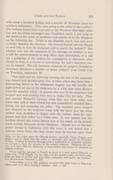
[p. 203]
with about a hundred Indians and a number of Mormons from the southern settlements. They were going to the scene of the conflict." The Indians joined their comrades at the Meadows that night while Lee and the whites encamped near Hamblin's ranch, a few miles to the north of the scene of hostilities and moved on to the Meadows on the following day. While at the Hamblin ranch, Lee sent word to Cedar detailing the situation. He claimed that he advised Haight to send help to save the emigrants and to pacify the Indians.29 But whether that was the substance of his message, or whether it was a call for reinforcements to help effect their destruction, or a call for a gathering of the settlers for consultation to determine what should be done, is a matter of speculation, for Lee's statement cannot be trusted. The call, however, whatever its purport, brought to Mountain Meadows a number of white settlers30 from Cedar City on Thursday, September 10.
That night and the following morning the fate of the emigrants was debated and decided upon. One incident which may have been a determining factor in the subsequent tragedy was the murder the night before of one of the emigrants by a white man some distance from the emigrant camp. It appears that two of the emigrants had escaped and were making their way to Cedar City for help. They had reached Richards' Springs when they met three white men whom they told of their errand but who immediately attacked them, killing one and wounding the other. The wounded party escaped and returned to the emigrant camp with the news that the white settlers were doubtless in league with the Indians since his companion had been killed by a white man. It was natural that this incident should also create intense fear in the minds of the already much excited Mormons at the Meadows. Should any of the emigrants escape to California with this story, it was feared that a military force from the state would soon be moving upon them
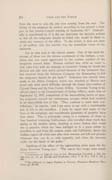
[p. 204]
from the west to join the one now coming from the east. The killing of the emigrant by settlers according to Lee played a large part in that fateful Council meeting of September 10.31 Undoubtedly it contributed to, if it did not determine the decision arrived at that all the emigrants should be killed who would be likely to retain any memory of the affair. To the writer, it does not seem at all unlikely that this murder was the immediate cause of the massacre.
Let us turn now to the remote causes. One of the most important of these was the intense excitement of the Indians, a condition that was much aggravated by the careless conduct of the emigrants toward them. Haslam testified that while en route to Salt Lake City with his message to Governor Young he found the Indians not only very much excited because of the treatment they had received from the Arkansas Company but threatening to kill the emigrants before he got back.32 Reference has already been made to the Dukes Company which was attacked at Beaver and saved only after much difficulty through the timely intervention of Colonel Dame and the Iron County Militia. Governor Young in his official report to the Commissioner of Indian Affairs, under date of September 12, 1857, complained of the demoralizing tactics of passing emigrants toward the unfortunate savages which had resulted in an unavoidable loss of life. "They continue to make their contributions," he reports, "and I am sorry to say with a considerable loss of life to the travellers. I learn by report that many of the lives of the emigrants and considerable quantities of property have been taken. This is principally owing to a company of three or four hundred returning Californians who travelled these roads last spring to the eastern states, shooting at every Indian they could see—a practice which has been indulged in to a great extent by travellers to and from the eastern states and California; hence the Indians regard all white men alike their enemies and kill and plunder whenever they can do so with impunity, and often the innocent suffer for the deeds of the guilty."
Speaking of the effect of the approaching army upon the Indians, Governor Young says: "The report that troops were wend-
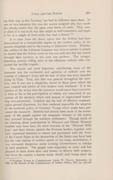
[p. 205]
ing their way to this Territory has had its influence upon them. In one or two instances this was the reason assigned why they made the attacks which they did upon some herds of cattle. They seem to think if it was to be war they might as well commence, and begin to lay in a supply of food when they had a chance."33
It is clear from the above report that the Indians had been demoralized to a considerable degree by the careless policy of the passing emigrants and by the coming of Johnston's Army. 'Whether the conduct of the Arkansas Company was wise or unwise it cannot be denied that the Indians were on the war path and that any march through their territory at this time was perilous. The savages, therefore, proved willing tools of the villainous radicals who concocted the terrible tragedy.
The second and most important contributing cause of the massacre was the excitement and agitation of radicals over the coming of Johnson's Army and the fear of what that army intended doing in Utah. True, this fear was general throughout the territory, but it was not a dangerous factor in those parts where the sane counsel and advice of wise leaders were dominant. It is the opinion of the writer that the massacre would never have occurred, at least as far as the participation of whites was concerned, in any portion of the territory where cool instead of impassioned leadership was paramount. Isolation and the lack of effective communication proved disastrous, for they rendered impossible the adoption of the moderate policy of Governor Young which might have prevented the massacre. Mention had already been made of the resentment of the people against the emigrants because of the course they pursued through the southern settlements. Though much of the boasting about participation in Missouri and Illinois Mormon troubles may have been the mere bravado of the "Missouri Wild Cats" and their threats against the Mormon leaders, together with their expressed intention to return and participate with the Army of the United States in the destruction of the Saints may have been but the vain ranting of reckless spirits of the camp, nevertheless, it was extremely dangerous under existing circumstances to indulge in such practices. The people were expecting an army and had planned to burn down their own homes, to destroy their property and leave the country a barren waste, should such troops enter the
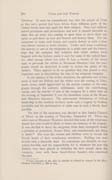
[p. 206]
Territory. It must be remembered, too, that the people of Utah at that early period had been driven from different parts of the United States time and again for their religion. They had suffered untold privations and persecutions and now it seemed plausible to them that an army was coming in upon them to drive them out again or pull them up root and branch and destroy them. For the emigrants to make such boasts and unwise threats at such a time was almost certain to invite disaster. Under such tense conditions the murder of one of the emigrants by a white man and the knowledge that the company had evidence that white settlers were leagued with the Indians, made it easy for some of the radical leaders, chief among whom was John D. Lee, a fanatic of the worst type, to persuade the whites at Mountain Meadows that the emigrants should be destroyed in order to assure the safety of the settlers. There appears to be no question that fear played a very important part in determining the fate of the emigrant company.
In the opinion of the writer, therefore, the agitation and excitement of both the Indians and the whites over the coming of Johnston's Army, much aggravated by the unwise conduct of the emigrants through the southern settlements, were the contributing causes, and the murder of one of the company by a white man on the evening of September 9, was the immediate cause of the Mountain Meadows massacre. The unfortunate domination of radical leadership in the southern territory made such a tragedy by Indians inevitable and the participation of white men in such a bloody deed possible.
The fate of the emigrants was decided at that fateful Council of Blood, on the evening of Thursday, September 10. There the white men at Mountain Meadows decreed that none of the emigrants should live who would be likely to retain any memory of the tragedy. It was decided to decoy the emigrants from their stronghold under a promise of protection, disarm them, and treacherously put them to death.34 Not even the women and children were to escape the bloody hands of their treacherous murderers. Nothing can ever excuse such a dastardly deed. Its conception was fiendish, its execution horrible, and the responsibility for it, whatever the part the Indians may have played in initiating the first assault upon the company, rests with those blood-thirsty fanatics who conceived the plan.
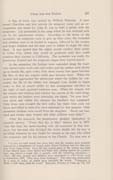
[p. 207]
A flag of truce was carried by William Bateman. A man named Hamilton met him outside the emigrant camp and an arrangement was made for John D. Lee to hold a parley with the emigrants. Lee proceeded to the camp where he was received with joy by his unfortunate victims. According to the terms of the surrender, the emigrants were to give up their arms, the wounded and children were to be loaded in wagons, followed by the women and larger children and the men were to follow in single file after them. It was agreed that the whites would conduct them safely to Cedar City, where they would be protected until they could continue their journey to California. The surrender was made, the procession formed and the emigrants began their fateful march.
In the meantime, the Indians were concealed along the road-side, behind some scrub oaks and cedars and the settlers were drawn up in double file, open order, with about twenty feet space between the files, so that the wagons could pass between them. When the women had approached the ambuscade where the Indians lay concealed, the file of the whites was changed from double to single order so that an armed settler by this arrangement marched on the right of each unarmed emigrant man. When the wagons and the women and children had reached the stretch of the road along-side which the Indians were concealed, the signal, "Do your duty" was given and within five minutes the butchery was completed. Only three men escaped the first volley but these were soon run down and killed by men who were stationed for that purpose. Only seventeen children were saved from the slaughter. About one hundred and twenty men, women and older children were slain.35
After the massacre, the perpetrators pledged themselves to absolute secrecy. "From that day to this," reports Lee in 1877, "this has been the understanding with all concerned in that massacre that the man who divulged the secret should die; he was to be killed wherever he was found for treason to the men who killed the emigrants and for his treason to the Church. No man was at
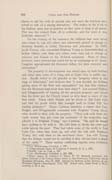
[p. 208]
liberty to tell his wife or anyone else, nor were the brethren permitted to talk of it among themselves. The orders to lay it on to the Indians were just as positive as they were to keep it all secret. This was the council from all in authority, and for years it was faithfully observed."36
On the evening of the massacre the children that were saved were taken by Lee and others and afterwards placed in charge of Mormon families at Cedar, Harmony and elsewhere. In 1859, Jacob Forney, who succeeded Brigham Young as Superintendent of Indian Affairs, sent them east where some were put in charge of relatives and friends of the ill-fated emigrants. Most of them, however, were received and cared for by an orphanage in St. Louis. Congress appropriated ten thousand dollars for their recovery and restoration.37
The property of the emigrants was seized upon by both Indians and white men, some of it being sold at Cedar City at public auction. Beadle refers to the plunder as the "property taken at the siege of Sebastapol," and declares that "it was divided, the Indians getting most of the flour and ammunition" but that they claimed that the Mormons kept more than their share.38 Lee accused Higbee and Klingensmith of keeping all the personal property and stated that the latter put the Church brand on fifty head or more of the best cattle. These cattle Haight and he drove to Salt Lake City and sold for goods which they brought back to Cedar City for trading purposes.39 Major Carleton mentions a report that Lee, Haight, and Klingensmith counseled with Brigham Young about what should be done with the property. "They took with them the ready money they got from the surrender of the emigrants and offered it to Brigham Young," says Carleton. "He said he would have nothing to do with it. He told them to divide the cows and cattle among the poor. They had taken some of the cattle to Salt Lake City when they went up, and after the talk with Brigham Young they sold these to the merchants there. Lee told Young that the Indians would not be satisfied if they did not have a share of the cattle."40 These various conflicting reports were evidently
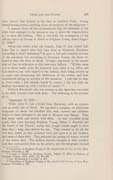
[p. 209]
mere rumors that existed at the time in southern Utah. Young denied having known anything about the property of the emigrants.41
It appears from all the circumstances that the intention of the white men engaged in the massacre was to place the responsibility for it upon the Indians. This is decidedly the assumption of the official report of George A. Smith to Brigham Young, dated August 17, 1858.42
About two weeks after the tragedy, John D. Lee visited Salt Lake City to report what had been done at Mountain Meadows. According to Lee's statement,43 he gave a full and complete account of the massacre, but according to Governor Young, the latter refused to hear the story in detail. Young's deposition at the second trial of Lee in reference to this interview follows: "Within some two or three weeks after the massacre, Lee, called at my office and had much to say with regard to the Indians, their being stirred up to anger and threatening the settlements of the whites, and then commenced giving an account of the massacre. I told him to stop, as from what I had already heard by rumor, I did not wish my feelings harrowed up with a recital of details."44
Wilford Woodruff, who was present at this interview, recorded in his daily journal what took place. The following is his account of it:
"September 29, 1857—
"Elder John D. Lee arrived from Harmony, with an express and an awful tale of blood. He reported a company of California emigrants of about one hundred fifty men, women and children. Many of them belonged to the mob in Missouri and Illinois. They had many cattle and horses with them. As they travelled along south, they went damning Brigham Young, Heber C. Kimball and the heads of the Church, saying that Joseph Smith ought to have been shot a long time before he was. They wanted to do all the evil they could, so they poisoned beef and gave it to the Indians, and some of them died. They poisoned the springs of water; several of the Saints died. The Indians became enraged at their conduct and they surrounded them on the prairie, and the emigrants formed
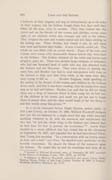
[p. 210]
a bulwark of their wagons, and dug an intrenchment up to the hubs of their wagons, but the Indians fought them five days until they killed all the men, sixty in number. They then rushed into the corral and cut the throats of the women and children, except some eight or ten children which they brought and sold to the whites. They stripped the men and women naked and left them stinking in the boiling sun. When Brother Lee found it out, he and some men went and buried their bodies. It was a horrid, awful job. The whole air was filled with an awful stench. Many of the men and women were rotten with unamenable disease before they were hurt by the Indians. The Indians obtained all the cattle and horses and property, guns, etc. There was another large company of emigrants who had one thousand head of cattle who was also damning both the Indians and the Mormons. They were afraid of sharing the same fate, and Brother Lee had to send interpreters with them to the Indians to help save their lives while, at the same time, they were trying to kill us. . . . . Brother Brigham, while speaking of the cutting of the throats of the women and children by the Indians down south, said that it was heart rending; that the emigration must stop as he had said before. Brother Lee said that he did not think there was a drop of innocent blood in their camp for he had two of the children in his house, and could not get but one to kneel down at prayer time, and the other would laugh at her for doing it, and they would swear like pirates."45
In a sworn statement before Nephi Clayton, notary public of Salt Lake County, on October 24, 1884, Wilford Woodruff declared that Lee did not intimate by a single word that any white man had anything whatever to do with the massacre and emphasized the fact that "he laid the whole thing to the Indians and claimed that he had done his best to prevent the occurrence."46 Aaron Farr testified in a sworn affidavit that Lee visited him in the afternoon of September 29, 1857, and reported that he had interviewed President Young that morning. "In a conversation with me lasting about an hour and a half," says Farr, "he detailed every particular of the horrible occurrence. He placed the blame of the massacre upon the Indians. He stated that he and his associates had done all in
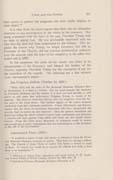
[p. 211]
their power to protect the emigrants but were totally helpless in their object."47
It is clear from the above reports that there was no intimation whatever of any participation by the whites in the massacre. Not being acquainted with the facts of the case, President Young took no steps to punish Lee. He was profoundly impressed with the idea that the deed had been perpetrated by the Indians. This explains the reason why Young, no longer Governor, but still as President of the Church, did not exercise ecclesiastical authority over the assassin until the news of his complicity in the affair first leaked out in 1870.
In the meantime, the press of the county was bitter in its denunciations of the Mormons, and blamed the leaders of the Church, especially President Young for the conception if not for the execution of the tragedy. The following are a few extracts from representative papers:
San Francisco Bulletin (October 12, 1857):
"What effect will the news of the Mountain Meadows Massacre have at Washington, it is hard to foresee. But we much mistake the character of President Buchanan and his cabinet, if it does not lead speedily to such action as will cause that arch-traitor, Brigham Young, to repent of his temerity. The blood of American citizens cries for vengeance from the barren sand of the Great Basin. The insulted dignity of the nation demands retribution from their infamous murderers. Virtue, Christianity and decency, require that the blood of incestuous miscreants who have perpetrated this atrocity shall be broken up and dispersed. Once the general detestation and hatred pervading the whole country is given legal countenance and direction, a crusade will start against Utah which will crush out this beastly heresy forever. From this State alone, thousands of volunteers could be drawn, who would ask no better employment than the extermination of the Mormons at the call of the Government."
Leavenworth Times (1875):
"It would be a waste of time and money to attempt to bring the Mountain Meadows Massacre assassins to justice. They have too strong a following. The Church of Jesus Christ of Latter Day Saints is bound to stand by them. To convict Lee would be to convict the Church and strike a fatal blow at its foundation."48
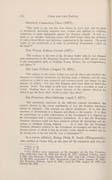
[p. 212]
Hartford, Connecticut Times (1875):
"That much at any rate has been shown by Lee's trial, and the guilt of mercilessly sacrificing unarmed men, women and children to religious fanaticism, is justly chargeable against the Mormon Church. It now remains to see whether American justice will much longer allow the existence of such a blood-thirsty and barbarous organization in the country. The good repute of our institutions is at stake in permitting Mormonism a place in the land."49
Fort Wayne, Indiana Journal (1875):
"The evidence in the trial of the Mormon leader John D. Lee charged with participation in the Mountain Meadows Massacre in 1857, clearly points to the unmistakable guilt of Brigham Young, Hooper, the ex-Congressman, and others."50
Salt Lake Tribune (August 14, 1875):
"The opinion of the writer is that Lee and all others who attribute the Massacre to religious fanaticism are laboring under a delusion, and the true explanation is that it was concocted and executed purely and simply for the purpose of robbery. Lee says that Brigham shed tears when he heard the account. Bosh! You might as well draw tears from a crocodile at such a recital. Nothing short of an unfair division of the plunder whereby he failed to get the lion's share would produce that effect."
San Francisco Alta California, (April 7, 1877):
"The sentiments expressed by the different journals throughout the country elicited by the recent punishment of Lee, the Mormon murderer, cannot be mistaken. The journals are almost unanimous. It is, that the existence of Mormonism is a disgrace and shame to the country. It is, that the contrivance by a tacit endorsement of the Government is a disgrace to the Government and to representative institutions. It is that the Mountain Meadows Massacre could not have occurred without the knowledge and direction of Brigham Young, himself. . . . . It is time that the Mountain Meadows Massacre ordered by the Priesthood, be revenged and that the infamous system of which it was the terrible result, should be crushed out by the strong arm of the law and the foot of detestation."51
In a sworn affidavit, Bishop Philip K. Smith (Klingensmith), who resided at Cedar City at the time of the massacre and was ac-
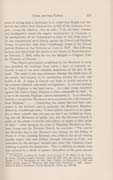
[p. 213]
cused of having been a participant in it, stated that Haight told him that he had orders from headquarters to kill all the Arkansas Company, except the children. But he adds: "I do not know whether said headquarters meant the regular headquarters at Parowan or the headquarters of the Commander-in-chief at Salt Lake City."52 No one remonstrated more bitterly against the Church and Brigham Young, in particular, than John Cradelbaugh, Judge of the Second Judicial District of the Territory of Utah, in 1859. The following extracts are taken from his speech in the House of Representatives on February 7, 1863, when he was the delegate to Congress from the Territory of Nevada:
"The Church government established by the Mormons to carry into operation the teachings from which I have so copiously extracted, is one of the most complete despotisms on the face of the earth. The mind of one man permeates through the whole mass of the people, and subjects to its unrelenting tyranny the souls and bodies of all. It reigns in Church and State, in morals and even in the minutest domestic and social arrangements. Is treason hatched in Utah, Brigham is the head traitor. Are rebel troops mustered against the United States, Brigham is their commander-in-chief. Is a law to be enacted, Brigham's advice determines it. Is an offending Gentile or an apostate Mormon to be assassinated, the order emanates from Brigham." . . . . Concerning the crimes that had been committed in the territory, and in particular the Mountain Meadows Massacre, Cradelbaugh adds: "I shall publish a portion of an appendix to these remarks that you may see that I am justified in charging that the Mormons are guilty, aye, that the Mormon Church is guilty of the crimes of murder and robbery as taught in their hooks of faith." After charging the crime of Mountain Meadows to Brigham Young and the Mormon Church, he concludes: "The motive the Mormons had in the Massacre was revenge for the killing of Parley P. Pratt, a leading Mormon, who, while in the act of running another man's wife and children through Arkansas to Utah, was overtaken by the outraged husband and slain—the Arkansas Court refusing to punish the perpetrator. They in addition, no doubt, were also actuated by a desire to possess themselves of the great amount
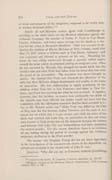
[p. 214]
of stock and property of the emigrants, supposed to be worth sixty or seventy thousand dollars."53
Nearly all anti-Mormon writers agree with Cradelbaugh in ascribing as the chief cause for the Mormon bitterness against the Arkansas Company, the murder of Parley P. Pratt in Van Buren County, Arkansas, and hence name revenge for his death as a motive for the crime at Mountain Meadows. Pratt was accused of abducting the children of Hector McLean of New Orleans, stood trial May 13, 1857, before a federal court at Van Buren, Arkansas; and was acquitted and allowed to proceed on his way. Mounting his horse, he was riding northward through a sparsely settled region toward the point where he proposed joining an emigrant train, when he was accosted by McLean who plunged his bowie knife into his victim's side and after Pratt had fallen from his horse shot him with the pistol of an accomplice. The murderer was never brought to justice. He claimed that Pratt had alienated the affections of his wife, but Mrs. McLean alleged drunkenness and cruelty as the cause of separation. She was endeavoring to regain possession of her children stolen from her in San Francisco and taken to New Orleans; and Pratt was assisting her when he was arrested. It appears, however, that this incident, no matter how profoundly the death of the Apostle may have affected the Saints, could not have had the connection with the subsequent massacre that has been ascribed to it; for, as Mr. Roberts points out,54 Elder Pratt was killed on the 13th of May near the line between Indian Territory and the state of Arkansas but on which side it is not certain, and while the news of his death had reached Salt Lake City, no particulars of that sad event were known in Utah at the time of the massacre because the eastern mail between Salt Lake City and Independence had been suspended for several months. For this reason, therefore, there is no evidence of any feeling during the period of revenge against the Arkansas emigrants attributive to the Pratt murder.
The reasons why Brigham Young did not act more vigorously in the investigation of the massacre are shown in his deposition, admitted and accepted in the second trial of John D. Lee:
Question: "Why did you not as Governor institute proceedings
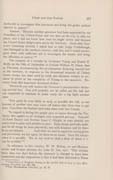
[p. 215]
forthwith to investigate that massacre and bring the guilty authors thereof to justice?"
Answer: "Because another governor had been appointed by the President of the United States and was then on the way to take my place, and I did not know how soon he might arrive and because the United States judges were not in the Territory. Soon after Governor Cumming arrived, I asked him to take Judge Cradelbaugh, who belonged to the southern district, with him and I would accompany them with sufficient aid to investigate the matter and bring the offenders to justice."55
The issuance of a circular by Governor Young and Daniel H. Wells on the 14th of September to Colonel William H. Dame, then at Parowan, accompanying the proclamation declaring martial law in the territory, in response to the threatened invasion of United States troops, has been used by some anti-Mormon writers as evidence in proof of the complicity of Young in the massacre. Extracts from this important document follow:
"Herewith you will receive the Governor's proclamation declaring martial law. You will probably not be called out this fall, but are requested to continue to make ready for a big fight another year. . . . .
"Sow grain in your fields as early as possible this fall, so the harvest of another year may come off before they have time to get here. Conciliate the Indians and make them your fast friends. . . . .
"In regard to letting the people pass or repass through the Territory, this applies to all strangers and suspected persons. Yourself (Colonel Dame) and Brother Isaac C. Haight, in your district, are authorized to give such permits to pass. Keep things perfectly quiet, and let all things be done peacefully, but with firmness and let there be no excitement. . . . . And what we said in regard to saving grain and provisions, we say again, let there be no waste. Save life always when it is possible. We do not wish to shed a drop of blood if it can be avoided."56
In reference to this circular, W. W. Bishop, an anti-Mormon writer and former attorney for John D. Lee, says: "The circular bears date two days before the massacre is charged to have been committed and the supposition is that it had been delivered to Dame
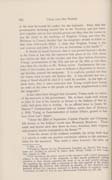
[p. 216]
at the time he issued his orders for the massacre. Next, take the proclamation declaring martial law in the Territory and put these facts together and no fair-minded person can deny that the massacre was the result of the teachings of Brigham Young and that the Mormons in Council decided that the emigrants should be killed as they were afterwards killed. I claim that Brigham Young is the real criminal and John D. Lee was an instrument in his hands."57
It should be noted, however, that it was proved beyond a doubt in the trials of Lee that the massacre took place on the 11th, three days before the date of the circular and four days before Governor Young's proclamation of the 15th and not on the 16th or two days later than the circular as Mr. Bishop infers. Furthermore, the contents of the circular do not seem to indicate a disposition to encourage hostility toward the emigrants. It is explicity pointed out that the Saints were to save, not destroy life. It was advised that not a drop of blood should be shed if it could be avoided. In the light of these facts, does it seem consistent that Young would have issued an order at this time to the people of the same neighborhood to kill the emigrants?
It has often been charged that Governor Young made no report of the massacre to the government. He, at least, made such report as John D. Lee in his capacity as farmer to the Indians of that locality had given him in writing. In an official letter to James W. Denver,58 Commissioner of Indian Affairs, under date of January 6, 1858, Young, as Superintendent of Indian Affairs, quoted as follows from Lee's report:
"About the 22nd of September, Captain Fancher and Company fell victims to the Indians' wrath near Mountain Meadows. Their cattle and horses were shot down in every direction, their wagons and property mostly committed to the flames."59
From the nature of the evidence available, the writer feels that it is unsafe to make any positive conclusion relative to the responsibility for the massacre. This much is clear, however: the news of

[p. 217]
this outrageous infamy was received with as much abhorrence by the rank and file of the Church as by any outside of it. This is attested by both Mormon and non-Mormon authorities. Stenhouse, a non-Mormon writes thus: "When the news of the massacre was heard, the people north were terror-stricken and shuddered with horror at the thought of the barbarous crime and the recital of the bloody work is as harrowing to them today. The Mormon people are not the offspring of a barbarous race, neither were they raised and nurtured in uncivilized nations. Apart from the spitefulness of religious controversy, which by the by is nothing peculiar to them, a kinder, more simple-hearted people is not upon the face of the earth. Had the Mountain Meadows Massacre occurred in any of the neighboring territories and that crime clearly the work of white people, the Mormons would have despised them, hated them, and, in all probability, would have refused all intercourse with them."60
This is what Bancroft, another non-Mormon writer says about the Massacre: "It may as well be understood at the outset that this horrible crime so often and so persistently charged upon the Mormon Church and its leaders is the crime of an individual, the crime of a fanatic of the worst stamp, who was a member of the Mormon Church, but of whose intentions the Church knew nothing, and whose bloody acts the members of the Church high and low, regard with as much abhorrence as any out of the Church. Instead, the blow fell upon the brotherhood with threefold force and damage. There was the cruelty of it which wrung their hearts; there was the odium attending its performance in their midst; and there was the strength it lent their enemies further to malign and molest them. The Mormons denounce the Mountain Meadows Massacre, and every act connected therewith, as earnestly and as honestly as any in the outside world. This is abundantly proved and may be accepted as an historical fact."61
Perhaps the best description of the attitude of mind and the sentiments of the Latter Day Saints towards this unfortunate affair, from the Mormon point of view, was voiced by President John Taylor in 1874 when he said:
"I now come to the investigation of a subject that has been harped upon for the last seventeen years, namely, the Mountain Meadows Massacre. That bloody tragedy has been the chief stock
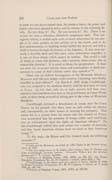
[p. 218]
in trade for the above named time, for penny-a-liners, the press, and pulpit, who have gloated in turns, and by chorus, in the sickening details. Do you deny it? No. Do you excuse it? No. There is no excuse for such a relentless, diabolical, sanguinary deed. That outrageous infamy is looked upon with as much abhorrence by our people as by other parties, in this section or in the world; and at its first announcement, its loathing recital chilled the marrow and sent a thrill of horror through the breasts of the listeners. It was most certainly a horrible deed and like many other defenceless tragedies, it is one of those things which cannot be undone. The world is full of deeds of crime and darkness; and a question often arises, who is responsible therefor? It is usual to blame the perpetrators. It does not seem fair to accuse nations, states and communities of deeds perpetrated by some of their citizens unless they uphold it."62
There was no federal investigation of the Mountain Meadows Massacre until the new judges, with Governor Cumming, were finally installed in their offices.63 On March 8, 1859, Judge Cradelbaugh, who was assigned to the southern district, held his first term of court at Provo. At this date, only six or eight persons had been committed to trial and these were now in the guard house at Camp Floyd, some of them being accused of taking part in the crime of Mountain Meadows.
Cradelbaugh stationed a detachment of troops near the Court House, on the grounds that there were no jails within his district and, consequently, no other means of securing his prisoners. This action led to a protest from the mayor and city council of Provo, who maintained that the presence of troops under such conditions was an infringement upon the rights of American citizens.64 To this Cradelbaugh replied that such action was a matter of necessity and that "good American citizens have no cause to fear American troops."65
To this reply, the Mayor and City Council made the following rejoinder:66
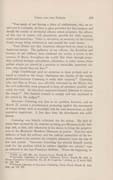
[p. 219]
"You speak of not having a place of confinement; this we assure you is a mistake, we have a place provided for that purpose and should the county or territorial officers arrest prisoners, the officers of this city or county will abundantly provide for their security, wants and necessities. There is, therefore, no necessity of the United States troops being stationed in and around the court house.
"Your Honor says that American citizens have no cause to fear American troops. The gallantry of our officers, the discipline and bravery of our soldiers, have rendered our armies a terror to the enemies of liberty throughout the world. But when through prejudice, political intrigue, speculation, selfishness, or other causes, those gallant armies are placed in a position to intimidate American citizens, why should they not fear?"
Judge Cradelbaugh paid no attention to these protests and refused to withdraw the troops whereupon the citizens of the county petitioned Governor Cumming to order their removal.67 Cumming, who was then at Provo, was officially informed by the Mayor that the civil authorities were prepared to keep all prisoners securely and safely for trial. He therefore requested General Johnston to remove the troops.68 The General refused to comply and was sustained in his action by the judges.69
Governor Cumming was firm in his position, however, and on March 27, issued a proclamation protesting against the movements of troops except such as accorded with his own instructions as chief executive magistrate. A few days later the detachment was withdrawn.
Cumming was bitterly criticized for his action. He had already been accused by his enemies as being pro-Mormon in his feelings and, at best, only lukewarm in his desire to bring the perpetrators of the Mountain Meadows Massacre to justice. Now his open defiance of both the military and the judicial authorities of the territory, meant to his enemies his complete alienation from the side of law and justice. "Governor Cumming has proved himself utterly unfit for the position which he neither dignifies nor adorns," runs an editorial in the San Francisco Bulletin. "From the beginning, he
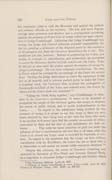
[p. 220]
has constantly sided in with the Mormons and against the judicial and military officials in the territory. His last and most flagrant outrage upon prudence and decency was a proclamation protesting against the presence at Provo City of troops called out upon requisition of Judge Cradelbaugh. Admitting that Judge Cradelbaugh was wrong, the Judge and General Johnston assumed responsibility for the act, pending a settlement of the disputed point by the executive at Washington and there the Governor should have let it rest. This would not suit him, however. Instead of acquiescing for a time, and setting an example of subordination and moderation, he proceeded to assure the Mormons that he had full control over the Army. True, he did not at once enter the protest against the employ of troops by Judge Cradelbaugh. He was more cunningly mischievous. He went to Provo where he watched the proceedings of the Court for several days. Finding the Judge determined to assert the supremacy of the law at all hazards, and to prevent packed juries to make the Court a laughing stock, the Governor then assumed the prerogative of Commander-in-Chief of the Army and ordered away the troops, by whose aid the Court alone was sustained."70
"Taking the whole thing together," says Cradelbaugh, in reference to the Governor's proclamation, "it seems to be designed to exasperate the people of this territory against the troops, to obstruct the course of public justice, and to excite insubordination in the Army. . . . . In regard to the inhabitants being terrified by the presence of troops, it is proper to say that many of them are very much annoyed by their being here at this time but those who seem to be stricken with terror have fled the country on account of crimes committed by them and the fear of just punishment for their offences. . . . . That none but those conscious of guilt are under the influence of fear is manifested by the fact that at all times when the Court is in session the Court room is crowded by hundreds of citizens. In regard to the statement that the troops are here without consultation with his Excellency, the Court has yet to learn that it is subservient to and cannot act except under executive dictation."71
Despite this criticism, the action of Governor Cumming was sustained by Secretary of War Floyd, and Attorney General Black. In a long letter to Associate Judges Cradelbaugh and Sinclair, Black
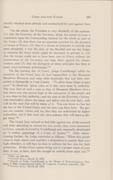
[p. 221]
sharply rebuked these officials and summarized his case against them thus:
"On the whole, the President is very decidedly of the opinion: (1) that the Governor of the Territory, alone, has power to issue a requisition upon the Commanding General for the whole or part of the Army; (2) that there was no apparent occasion for the presence of troops at Provo; (3) that if a rescue of prisoners in custody had been attempted, it was the duty of the Marshal and not the Judge, to summon the force which might be necessary to prevent it; (4) that the troops ought not to have been sent to Provo without the concurrence of the Governor, nor kept there against his remonstrance; and (5) that the disregard of these principles has been in many ways extremely unfortunate."72
On the opening day of Court, Judge Cradelbaugh called the attention of the Grand Jury he had impannelled to the Mountain Meadows Massacre and some other homicides that had been committed at Springville in Utah County. "To allow these things to pass over," he observed, "gives color as if they were done by authority. The very fact of such a case as that of Mountain Meadows shows that there was one person high in the estimation of the people and it was done by that authority; and the case of the Parrishes (Springville homicides) shows the same, and unless you do your duty, such will be the view that will be taken of it. You can know no law but the law of the United States and the laws you have here. No person can commit crimes and say that they are authorized by higher authorities, and if they have any such notions, they will have to dispel them."73
The Grand Jury refused to find bills against any of the accused and after remaining in session for two weeks, they were summoned to Court, soundly lectured by Cradelbaugh and summarily discharged as "a useless appendage of a Court of Justice."74 After remonstrating further, the Judge concluded as follows: "When this people come to their reason and manifest a disposition to punish their own high offenders, it will then be time to enforce the law also for their protection. If this Court cannot bring you to a proper sense of your duty, it can, at least, turn the savages in custody loose upon you."75
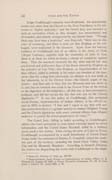
[p. 222]
Judge Cradelbaugh's remarks were ill-advised. He undoubtedly meant none other than the Church or the First Presidency in his reference to "higher authority;" and the Grand Jury was incensed at such an accusation which, as they thought, was unwarranted and ill-founded, and entirely unsupported by any known facts. "Though there may have been a suspicion," says Bancroft, "there was no fair color of testimony, and there is none yet that Brigham or his colleagues were implicated in the massacre. Apart from the hearsay evidence of Cradelbaugh and of an officer in the Army of Utah (Major Carleton), together with the statements of John D. Lee, there is no basis on which to frame a charge of complicity against them. That the massacre occurred the day after martial law was proclaimed and within two days of the threat uttered by Brigham in the presence of Van Vliet; that Brigham, as Superintendent of Indian Affairs, failed to embody in his report any mention of the massacre; that for a long time afterwards, no allusion to it was made in the tabernacle, or in the Deseret News—the Church organ of the Saints—and then only to deny that the Mormons had any share in it; and that no mention was made in the Deseret News of the arrival or the departure of the emigrants;—all this was at best presumptive evidence, and did not excuse the slur that was cast on the Church dignitaries."76 It was this policy of Cradelbaugh, that prompted Jacob Forney, Superintendent of Indian Affairs, in his official report in 1859, to declare: "I fear and I regret to say that with certain parties here there is a greater anxiety to connect Brigham Young and the Church dignitaries with every criminal offence than diligent endeavor to punish the actual perpetrators of crime."77
The Grand Jury, failing to indict according to Cradelbaugh's advice, the Court proceeded to issue bench warrants based on sworn information, and the United States Marshall, aided by a military posse, made a few arrests. After closing the term of Court at Provo, Cradelbaugh, accompanied by a small detachment of United States troops under the command of Reuben P. Campbell, visited the southern part of the territory, including the Santa Clara Valley, Cedar City and the Mountain Meadows. According to General JohnstonGeorge A. SmithrsName>, the motive for dispatching this force with Cradelbaugh to the neigh-
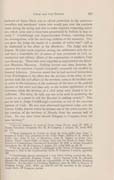
[p. 223]
borhood of Santa Clara was to afford protection to the numerous travellers and merchants' trains who would pass over the southern route during the spring and also to make inquiries respecting murders, which were said to have been perpetrated by Indians in that vicinity.78 Cradelbaugh met Superintendent Forney, returning from his investigations with the surviving children of the massacre. Forney gave the Judge the names of a number of white men79 said to be implicated in the affair at the Meadows. The Judge and the Deputy Marshal made inquiries among the settlements with the result that a formidable list of names of men prominent in civil, ecclesiastical and military affairs of the communities of southern Utah was drawn up. These men were regarded as implicated in the Mountain Meadows Massacre. Nothing further was done, however, because at this juncture, Captain Campbell's command was recalled by General Johnston. Johnston stated that he had received instructions from Washington to the effect that the services of the army, in connection with the civil affairs of the territory, were to be invoked only to assist in the execution of the sentences of the laws or the judicial decrees of the court and then only on the written application of the Governor when the services of a civil posse were found to be insufficient. The army, he said, was not to be used in protecting the courts or as a posse to aid the Marshal in making arrests.80 This put an end to judge Cradelbaugh's activities as one of the associate justices of Utah. He was soon afterward appointed judge over the Carson Valley district where he became one of the prime movers for the creation of the territory of Nevada from the western half of Utah. He was later twice elected Delegate to Congress from the new territory.81
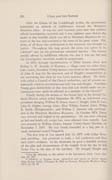
[p. 224]
After the failure of the Cradelbaugh probes, the government maintained an attitude of indifference toward the Mountain Meadows affair. It was not until fourteen years later that another official investigation occurred and it was eighteen years before the leader in that horrible attack was led to Mountain Meadows by officers of the law and executed at the scene of his great crime. He, alone, of all those who participated in the massacre, was brought to justice. Throughout this long period, the press was active in its criticism82 and yet the government remained inactive. The excuse usually offered by indifferent officials was that it was too late and any investigation, therefore, would be inopportune.
In 1870, through representations of Elder Erastus Snow and Bishop L. W. Roundy of Kannara, a village some ten miles from Lee's ranch, President Young became convinced of the responsibility of John D. Lee for the massacre and of Haight's responsibility in not restraining him since he was Lee's superior officer. He forthwith called a Council of the Church authorities, and all present unanimously voted to excommunicate both Lee and Haight. President Young gave instructions at that time that Lee should under no circumstances ever again be admited as a member of the Church.83
Finally during the session of the Grand Jury in the Second Judicial District which ended September 28, 1874, an indictment was presented charging William H. Dame, Isaac C. Haight, John D. Lee, John H. Higbee, George Adair, Eliot Wilden, Samuel Jukes, Philip K. Smith (Klingensmith), and William C. Stewart with participation in the Mountain Meadows Massacre. In October 1874, Dame was arrested and lodged in the penitentiary. He was later released on bail and finally all, except Lee, were released from custody. Lee was arrested by William Stokes, Deputy United States Marshal, on November 7, 1874. He was found concealed in a hog pen at a small settlement named Panguitch.
The first trial of Lee opened July 12, 1875, with judge Boreman presiding. Lee promised to make a full confession and thus turn state's evidence. In his statement, he gave a detailed account of the plan and circumstances of the tragedy from the day he left Cedar City to the date of the butchery. He charged Haight and
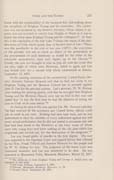
[p. 225]
Dame with the responsibility of the massacre but said nothing about the complicity of Brigham Young and his associates. His confession was not accepted by the District Attorney, whose object, it appears, was not so much to convict Lee, Haight, or Dame as it was to fasten the crime upon Brigham Young and his colleagues." At least this is the conclusion of the Salt Lake Tribune, the organ of the anti-Mormons of Utah, which speaks thus of the first trial of Lee: "There was this peculiarity in the trial of last year (1875); the conviction of the prisoner was not so much an object of the prosecution as the procurement of such testimony as would fix the crime of the wholesale assassination upon men higher up in the Church."85 Finally, the case was brought to trial on July 23, with the result that the jury, eight of whom were Mormons, failed to agree and Lee was bound over for a second trial which commenced at Beaver, September 13, 1876.
In the opening statement of the second trial, United States District Attorney Sumner Howard, said that he had not come to try Brigham Young and the Mormon Church but to proceed against John D. Lee for his personal actions. Lee's attorney, W. W. Bishop, after making his opening speech, said that he was glad that Brigham Young and the Mormon Church were not on trial in this case and added that "it was the first time he had the pleasure of trying the case in Utah on its own merits."86
In closing his plea in the case against Lee, Mr. Howard said that "he had received all the assistance any United States official could ask on earth in any case. Nothing had been kept back, and he was determined to clear the calendar of every indictment against any and every actual participator, but he did not intend to prosecute any one that had been lured to the Meadows at the time, many of whom were only young boys and knew nothing of the vile plan which Lee originated and carried out, for the destruction of the emigrants."87
Lee was found guilty of murder in the first degree. The case was appealed to the Supreme Court and argued before that tribunal by the Hon. Frank Tilford and Sumner Howard for the people and by W. W. Bishop for Lee. The judgment of the lower court was sustained, however, and Lee was sentenced to be shot. He was executed at Monument Point, Mountain Meadows, March 23, 1877.